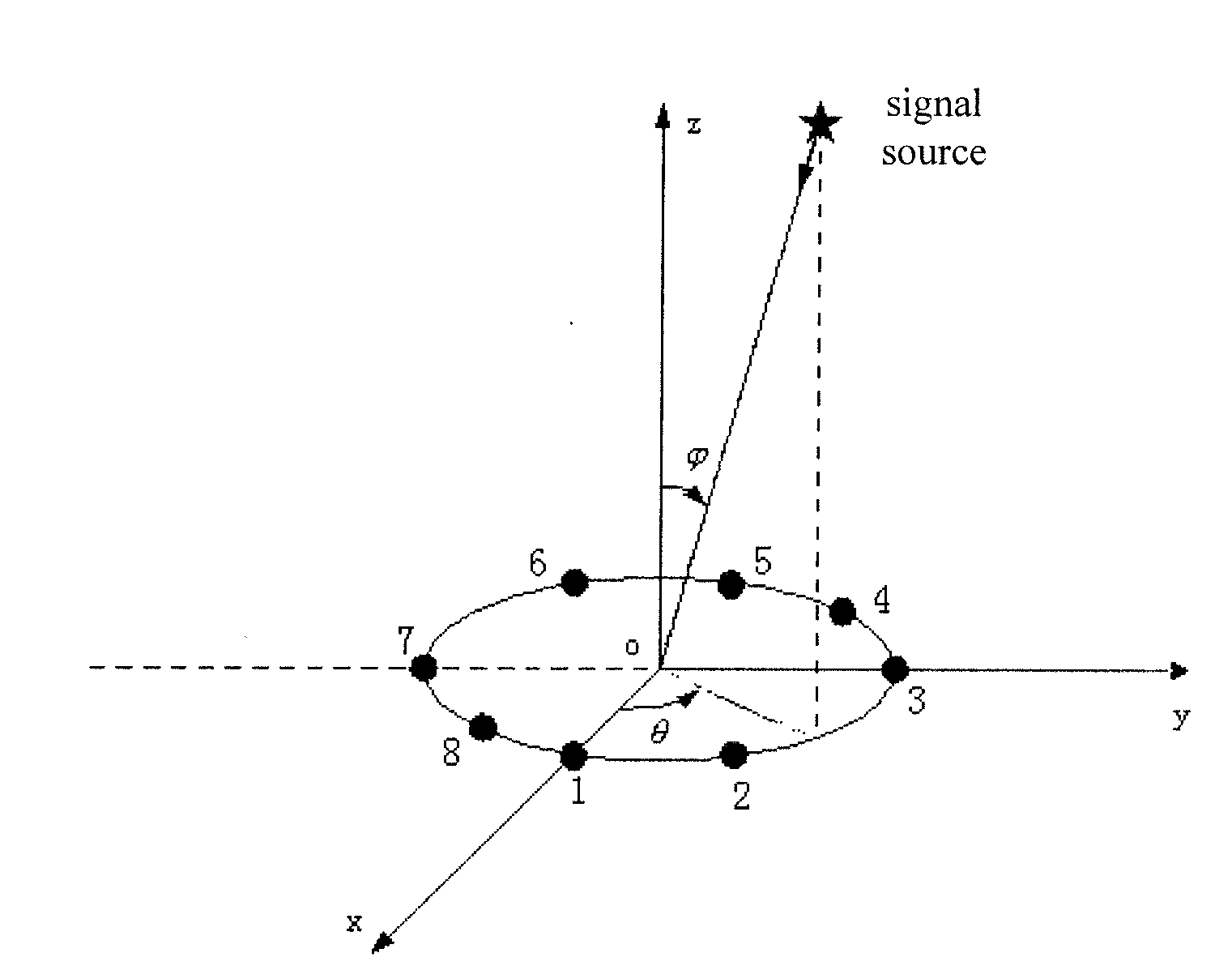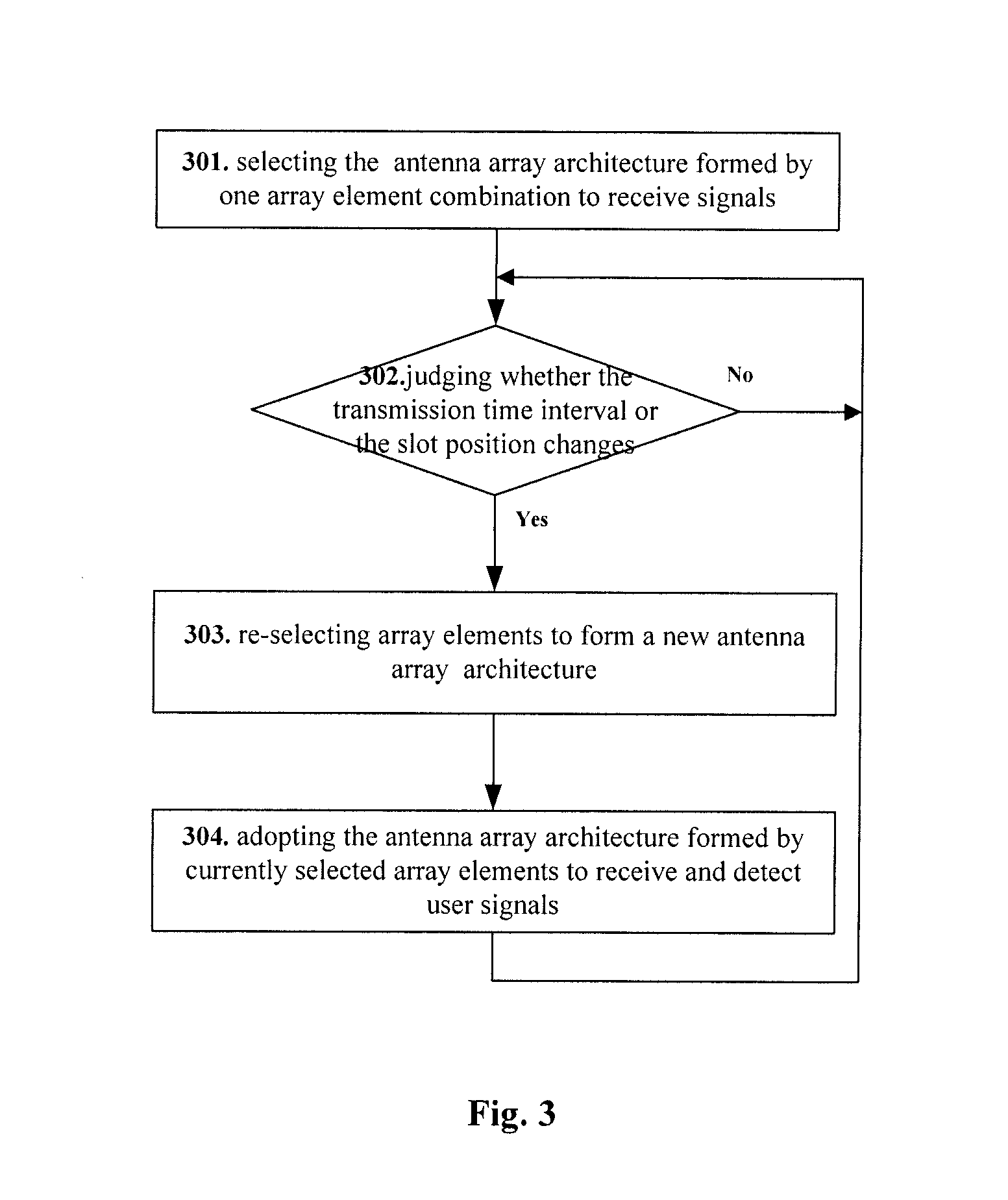Method For Dynamically Selecting Antenna Array Architecture
- Summary
- Abstract
- Description
- Claims
- Application Information
AI Technical Summary
Benefits of technology
Problems solved by technology
Method used
Image
Examples
Embodiment Construction
[0016]A main idea of the present invention is to select part array elements from all the array elements of the selected basic antenna array to form different antenna array architecture and to dynamically select different antenna array architecture according to changes of slot positions or the transmission time intervals (TTIs) to receive and detect user signals.
[0017]The existing antenna array is regarded as the basic antenna array and the existing antenna array refers to a linear antenna array or a circular antenna array of 4 array elements, 8 array elements or 16 array elements etc; the selecting of part array elements is to firstly determine the number of the array elements to be selected according to the system processing ability and / or the number of currently accessed users, then to determine array elements to be selected and it is random to select array elements, for example, if 4 array elements are to be selected from an 8-array element antenna array, 4 continuous array eleme...
PUM
 Login to View More
Login to View More Abstract
Description
Claims
Application Information
 Login to View More
Login to View More - R&D
- Intellectual Property
- Life Sciences
- Materials
- Tech Scout
- Unparalleled Data Quality
- Higher Quality Content
- 60% Fewer Hallucinations
Browse by: Latest US Patents, China's latest patents, Technical Efficacy Thesaurus, Application Domain, Technology Topic, Popular Technical Reports.
© 2025 PatSnap. All rights reserved.Legal|Privacy policy|Modern Slavery Act Transparency Statement|Sitemap|About US| Contact US: help@patsnap.com



